Lennox vs trane and 3 ton vs 3.5 ton - phoenix arizona
Hector MIranda
last year
Featured Answer
Comments (55)
Austin Air Companie
last yearmike_home
last yearRelated Discussions
Lennox vs Trane vs Bryant
Comments (8)We live in coastal SC and have steamy weather extremes and frequent lightning, power outages and surges, with on again off again power. We own Trane Heat Pumps and Air Handlers, one 3 ton and one 2.5 ton, which were installed 11 years ago by the builder of our house [we are the second owner for 8 years]. We have been told that the heater crankcase has failed on the 2.5 ton unit which would be an expensive repair on a 11 year old unit and we have been advised that we should strongly consider buying new units because of their age. Overall, we have been pleased with these Trane units. Previously, we had Carrier units and were pleased with them. When problems occurred, the technicians could repair them quickly. Service Experts here in coastal SC near Beaufort and Hilton Head has quoted me for a 2.5 ton unit: Lennox Elite XP14 and the CBX27UH, variable speed air handler; digital thermostat, Pure Air Cabinet; 10 yr. parts and compressor, 1 yr labor $6719. Less rebate of 400. For net 6319. Plus To extend the labor 9 years is $1,095.00. Told Tax Credit Available. Lennox Elite XP15 and the CBX32MV, variable speed air handler; Touch screen programmable thermostat, Pure Air Cabinet; 10 yr. parts ands compressor, 1 yr labor $8421. Less rebate of 500. For net $7921. Plus To extend the labor 9 years is $1,095.00. Told NO Tax Credit Available. Lennox Elite XP19 and the CBX32MV; variable speed air handler; 2 speed compressor; Touch screen programmable thermostat, Pure Air Cabinet; 10 yr. parts and compressor, 10 yr labor $11408. Less rebate of 900. For net 10508. Told Tax Credit Available. I have been quoted for a 3.0 ton unit: Lennox Elite XP14 and the CBX27UH, variable speed air handler; digital thermostat, Pure Air Cabinet; 10 yr. parts and compressor, 1 yr labor $8009. Less rebate of 400. For net 7608. Plus To extend the labor 9 years is $1,095.00. Told Tax Credit Available. : Lennox Elite XP15 and the CBX32MV, variable speed air handler; Touch screen programmable thermostat, Pure Air Cabinet; 10 yr. parts ands compressor, 1 yr labor $9003. Less rebate of 500. For net $8503. Plus To extend the labor 9 years is $1,095.00. Told NO Tax Credit Available. Lennox Elite XP19 and the CBX32MV; variable speed air handler; 2 speed compressor; Touch screen programmable thermostat, Pure Air Cabinet; 10 yr. parts and compressor, 10 yr labor $12153. Less rebate of 900. For net 11253. Told Tax Credit Available. Service Experts here state that the Trane XL15I Weathertron 4TWX5030A1 with 4TEE3F39A1 and the XL15I Weathertron 4TWX5036A1 with 4TEE3F39A1 are the same as the Lennox Elite XP15 and the CBX32MV and would cost us the same. They also state that the Carrier Performance "H" series units, such as PERFORMANCE 15 PURON HP CARRIER AIR CONDITIONING 25HPA536H30 FV4BNB006 or PERFORMANCE 15 PURON HP CARRIER AIR CONDITIONING 25HPA548H30 FV4BNB006 are Carriers 3 ton and 4 ton units with a 5 ton Air Handler. They state that a 2.5 and 3 ton unit would cost the same as the Trane or Lennox systems.. Are these Lennox, Trane, and Carrier units comparable and does this pricing sound reasonable. Thank you for your comments, opinions and thoughts....See MoreLennox vs. Trane vs. Rudd
Comments (11)First, any of the brands and models mentioned will give good service if they are sized correctly and properly installed. All hvac equipment makers use secondary parts from the same major suppliers, GE, White Rodgers, Robert Shaw, Fasco and Honeywell to mention a few. Despite all the hoopla none is makedly better than the others. There is no unit made that you can have installed and never have a problem. The great percentage of hvac problems occur in secondary equipment, such as relays, switches, motors, printed circuit control boards and other replacable parts. As I stated earlier these parts are produced by a few major firms who supply the same quality parts to everyone, they do not make a good part for one maker and a bad one for another. In each batch of say 500 parts a small number are going to fail, this is an irrefutable fact. Whether one gets a piece of equipment with one of these destined to fail parts depends on luck and nothing else, the name plate on the equipment has nothing to do with it. Be more concerned about the installation, any brand wrongly sized and poorly installed will not give good service. Next be concerned about the warranty, does it cover parts as well as labor and trip fees? Failure to get a clear understanding about warranty provisions can lead to nasty finiancial surprises later. Lastly consider price, get the best deal you can on the equipment you select, don,t be too concerned about the brand. Check out the contractor as thoroughly as you can. Good luck Iggie...See MoreTrane XV95 vs. Rheem RGRM vs. Lennox G61V
Comments (14)Ok, I received the numbers after the manual J calculation. The manual J load calculation gave an estimate of 79522 BTU's. This was figured with a -15 degree temp. The thermostat included is a Honeywell 6000. So with that in mind, I have the following three options still being recommended: 1. Trane XV95, 100,000 BTU. 95% efficiency. (4 ton blower) Cost: $2,125 after all rebates and tax credit. 2. Rheem RGRM. 90,000 BTU. 95% efficiency. (5 ton blower). Cost: $1,728 after all rebates and tax credit. 3. Lennox G61V. 90,000 BTU. 95% efficiency. (5 ton blower.) Cost: $2,125 after all rebates and tax credit. The dealer said he doesn't think the Trane is oversized and that the next size down in Trane would be cutting too close to the manual J recommendation for him to be comfortable. So, any opinions on this? I'm leaning towards the Lennox or Rheem as they seemed sized properly for my house better. But between the two, I'm stuck....See More2 Ton vs 2.5 Ton
Comments (32)You have a contractor problem! Here is my suggestion. First, change your approach. Stop playing HVAC contractor. I understand feeling the need to based on how your contractor is responding, but stop, now. Escalate the problem to the local Carrier distributor. They have at least one dedicated technical advisor on staff to help a contractor who is struggling, and your contractor is clearly struggling. (Sidenote: You distributor will be either independant or factory owned.) Monday morning call the distributor. Calmly tell them you bought a brand new Carrier system x weeks ago from x contractor. It has never worked correctly. They have been out x times since the installation and they don't seem to know what to do. A good distibutor will jump right on it. First, he will talk with the contractor to review what has been done so far. He may suggest a course of action for the contractor to take or decide he needs to see the installation first hand. Push to have him see the installation. Also, confirm this is the distributor's dedicated technical guru you are dealing with and not the distributor's sales person who sometimes is dispatched to go out and smooth things over, ultimately hoping to explain away the problem. Be nice, but firm. Good luck. If you get any push back, and hopefully you won't, point them to the link below....See MoreAustin Air Companie
last yearHector MIranda
last yearAustin Air Companie
last yearAustin Air Companie
last yearCharles Ross Homes
last yearlast modified: last yearAustin Air Companie
last yearlast modified: last yearCharles Ross Homes
last yearmike_home
last yearAustin Air Companie
last yearHector MIranda
last yearAustin Air Companie
last yearlast modified: last yearmike_home
last yearAustin Air Companie
last yearmike_home
last yearAustin Air Companie
last yearlast modified: last yearmike_home
last yearCharles Ross Homes
last yearG
last yearAustin Air Companie
last yearlast modified: last yearAustin Air Companie
last yearmike_home
last yearCharles Ross Homes
last yearAustin Air Companie
last yearCharles Ross Homes
last yearAustin Air Companie
last yearmike_home
last yearAustin Air Companie
last yearG
last yearAustin Air Companie
last yearCharles Ross Homes
last yearmike_home
last yearAustin Air Companie
last yearCharles Ross Homes
last yearG
last yearmike_home
last yearCharles Ross Homes
last yearAustin Air Companie
last yearCharles Ross Homes
last yearAustin Air Companie
last yearCharles Ross Homes
last yearlast modified: last yearAustin Air Companie
last yearCharles Ross Homes
last yearAustin Air Companie
last yearCharles Ross Homes
last yearAustin Air Companie
last yearCharles Ross Homes
last yearAustin Air Companie
last year
Related Stories
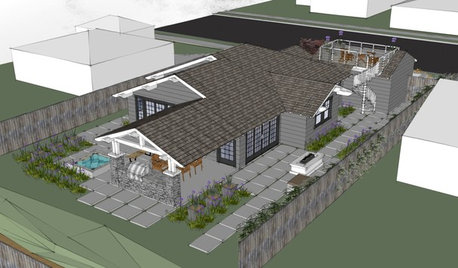
WORKING WITH AN ARCHITECTWho Needs 3D Design? 5 Reasons You Do
Whether you're remodeling or building new, 3D renderings can help you save money and get exactly what you want on your home project
Full Story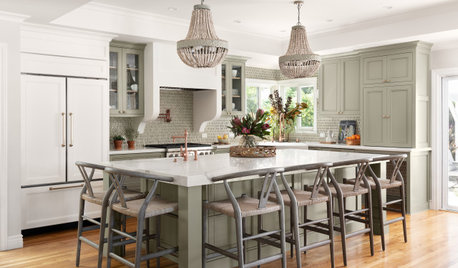
KITCHEN MAKEOVERSBefore and After: 3 Light Green-and-White Kitchen Makeovers
These top-to-bottom remodels improved layout and flow, increased square footage and mixed earth tones with neutral hues
Full Story
GARDENING GUIDESThe Truth About Bats: 3 Reasons to Love Them
It’s Halloween — time for spiders, black cats and bats. Here’s why we should appreciate, not fear, the nocturnal winged mammals
Full Story
LIVING ROOMSDesign Dose: 3 Living Rooms That Caught Our Eye This Week
We wanted to learn more about these living rooms — bright, bold and rustic — uploaded in the past 7 days
Full Story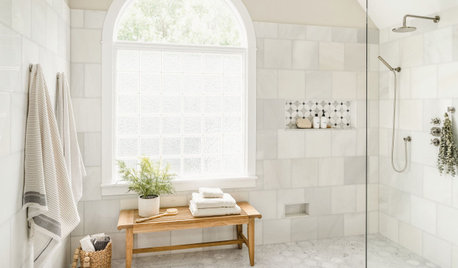
BATHROOM MAKEOVERSBefore and After: 3 Bathroom Makeovers That Got Rid of the Tub
See how designers removed bathtubs in these bathroom remodels to create more open, airy and functional spaces
Full Story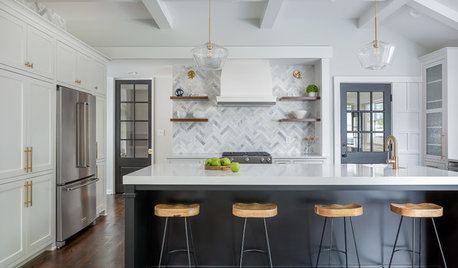
KITCHEN MAKEOVERSBefore and After: 3 Kitchens Ditch Upper Cabinets and Lighten Up
Pros replace cabinetry with tiled walls, striking focal points and expansive windows
Full Story
MOST POPULAR5 Remodels That Make Good Resale Value Sense — and 5 That Don’t
Find out which projects offer the best return on your investment dollars
Full Story
PETS5 Finishes Pets and Kids Can’t Destroy — and 5 to Avoid
Save your sanity and your decorating budget by choosing materials and surfaces that can stand up to abuse
Full Story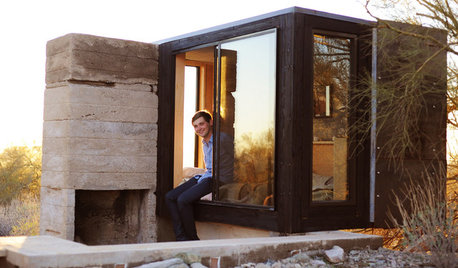
SMALL HOMESHouzz Tour: A Student's Bed-Size Shelter in the Arizona Desert
Could you sleep in such a small space just above the desert floor? One Taliesin architecture student at a time does just that
Full Story
MOST POPULAR5 Ways to Hide That Big Air Conditioner in Your Yard
Don’t sweat that boxy A/C unit. Here’s how to place it out of sight and out of mind
Full Story













mike_home